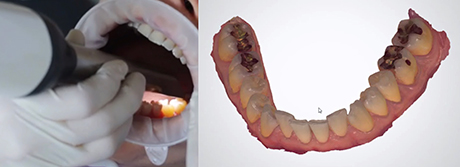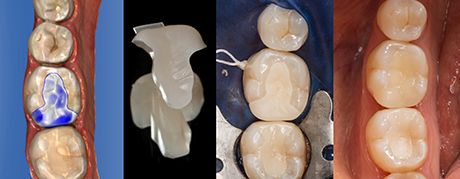Computer-aided Restorative Dentistry and Dental Informatics
The Department of Computer-Assisted Restorative Dentistry was established in 2010 as the first of its kind in Europe. Digital processes and procedures have become indispensable in every specialist field. In dentistry in particular, these procedures offer a number of obvious advantages and enable simplified and improved therapeutic and diagnostic approaches. Today, reflected in its widespread use in dentists' practices , informatics plays a key role in interventional dentistry.
The concept of computer-assisted fabrication of dental restorations dates back to 1980 with the development of the CEREC method in response to the practical need for fitting and durable tooth-colored restorations. In 1985, this method was used for the first time in Zurich to place a ceramic inlay fabricated by the dentist directly at the patient’s chairside.

- Optical impression with camera and light (left) and digital 3D color model of the oral situation (right)
Since then, the technology has developed in leaps and bounds. The achievements of sensor technology, mathematical models and algorithms, and the possibilities of modern production technology have greatly changed the areas of application and working methods. Today, the majority of dental restorations and dentures are produced using digital technologies. The advantages are the use of better tooth-colored materials and the more harmonious integration of the digitally produced restorations into the masticatory system.

- Computer-aided production chain (from left to right): Automatic calculation of the outer shell of the restoration / computer-aided production from optimized material block / insertion / finished restoration in the patient’s mouth